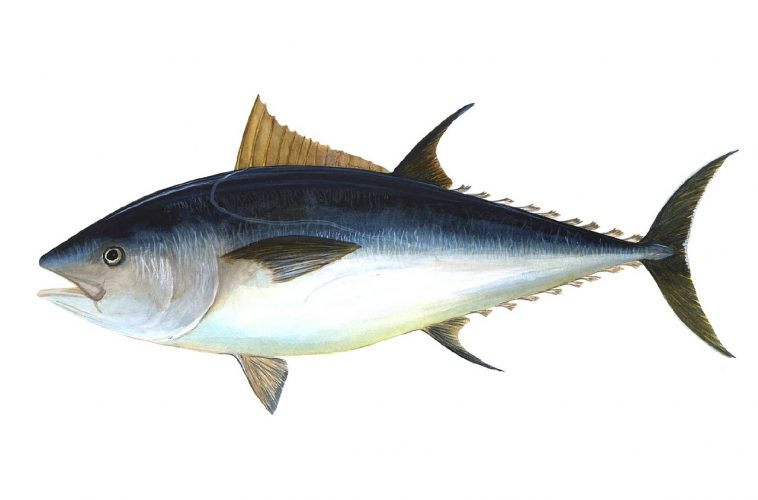Tuna is a type of fish that thrives in salty tropical water bodies and is one of the most consumed on the planet. There are different species available and they have different sizes and features. They are some of the largest species that can weigh up to over 500 pounds. Together with the way fishing for them is fun, and some types are delicious to eat. Unfortunately, people’s love for tuna has made them an endangered species because in some regions of the world they are over fished. The number of species has reduced by up to 90% in places like Japan. More tuna information is provided below.
Tuna behavior
Although they are big, their size does not affect their swimming abilities. Some species are among the fastest fish with speeds that can go up to 62 miles. They can change the positions of both their dorsal and pectoral fins to increase swimming speed when needed. All tuna species are also known to migrate frequently and can travel long distances within short periods. Given their adaptable nature, tuna fish can swim in deep waters and still do well on the surface. This also makes it easier for them to find food.
While tuna predate on other fish such as mackerel, quids, and herring among others, it is also predated upon by other bigger fish such as sharks and orcas. They also have a unique feature that makes them warm-blooded. These are “rete mirabile”, which are muscles that are surrounded by veins and arteries that help warm their blood when needed. With this, tuna can have a higher body temperature than that of the water they are in. This also allows them to survive since they can swim fast and change locations frequently, something that is vital in helping them breathe.
Tuna species
Atlantic bluefin tuna
Also known as the giant bluefin tuna, these species thrive mostly in the Mediterranean Sea and the Eastern and Western part of Atlantic Ocean. They can grow past 900kg and are some of the most endangered species in Japan.
Albacore tuna
This species of tuna is also known as longfin tuna, thanks to the distinctively long pectoral fins. They thrive in tropical waters and is mostly found in the Pacific, Indian and Atlantic oceans. Their dorsal part is blue while the central white is silver-blue. They can grow up to 1.4m.
Blackfin tuna
With the ability to grow up to 100cm and weigh 46 pounds, this is the smallest species of tunas. They have yellow sides and slightly yellow finlets together with black backs and oval shapes.
Longtail tuna
This species can reach 57 inches and weigh 79 pounds. It is slimmer than others and has shorter fins on the side.
Yellowfin tuna
These are available in both subtropical and tropical waters across the globe. It has yellow dorsal, and anal fins and yellowtail. They can reach 180kg.
Bigeye tuna

These can reach 8ft and weigh over 180 kg. They have large eyes and heads and long pectoral fins.
Pacific bluefin tuna
This species can weigh over 990 pounds and reach 9.8ft in length. They are found in the North Pacific and some parts of North America.
Southern bluefin tuna
This can grow past 2.5m and 260kg. They are available in the southern hemisphere.
Conclusion
Tuna, like other fish species, also produce a lot of eggs when mating. Most of their eggs end up being eaten by the predators. They do not have a universal mating season since it is determined by the location. For instance, tunas that are found in Mediterranean Sea mate between June and August while those found in the Gulf of Mexico mate between April to mid-June. Just like the eggs and the long-life span of up to 40 years, a small percentage lives that long. Most of them fall prey to the other species while others fall prey to humans.












Pingback: How to fish for Tuna | Reel Fishing Guru
Pingback: How to Fillet a Tuna | Reel Fishing Guru
Pingback: Is Grouper Bad for Gout? | Reel Fishing Guru
Pingback: Do Mahi Mahi Have Teeth? | Reel Fishing Guru